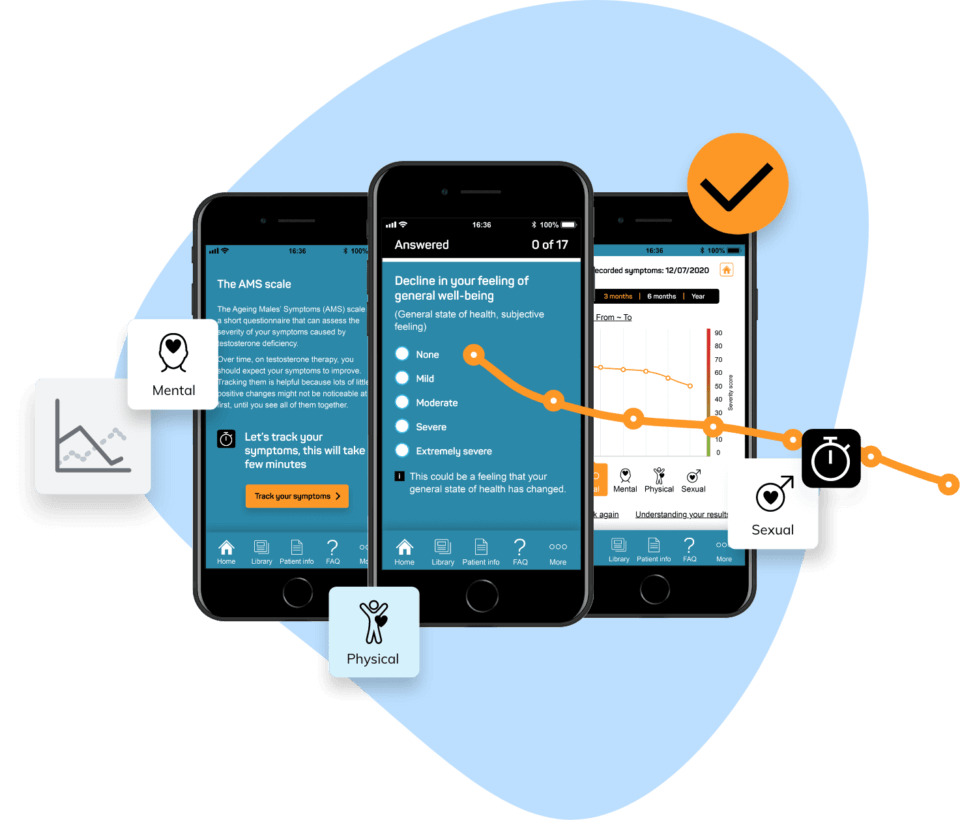Keeping active
Exercise is an important part of maintaining a healthy lifestyle and has a protective effect against many conditions which are closely linked to testosterone deficiency (TD), such as:1,2
- Type 2 diabetes
- Obesity
- Heart disease
- Mental health problems
- Social isolation
Sometimes it’s hard to know what counts as exercise or how much exercise is enough. Luckily, there are some guidelines in place, which advise on what a healthy level of exercise should look like for adults aged 19–64.3
If you can’t do as much exercise as the recommended amount, that’s OK. Even a small amount of exercise can be beneficial.3
You should aim to do a strength building exercise two days a week. This could be some form of weight training in the gym, but can also include strenuous gardening or carrying something heavy, like shopping.3
Every week, you should aim for 150 minutes of moderate intensity activity, such as brisk walking or cycling, or 75 minutes of high intensity activity, such as running or stair climbing. Or you can do a combination of these throughout the week.3
Try to break up long periods of inactivity with at least a light bit of physical activity.3 For example, if you have a desk job, try to take a short walk every now and then throughout the day, even if it’s just to get another cup of tea.
If you need help getting started exercising, consider joining a program that you can follow to track your progress, such as the NHS Couch to 5K.


